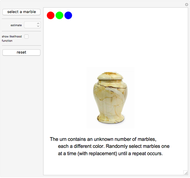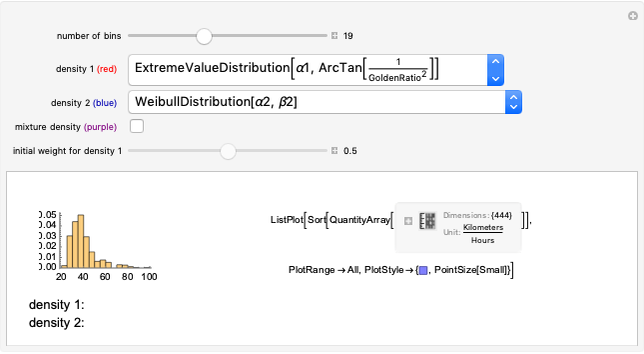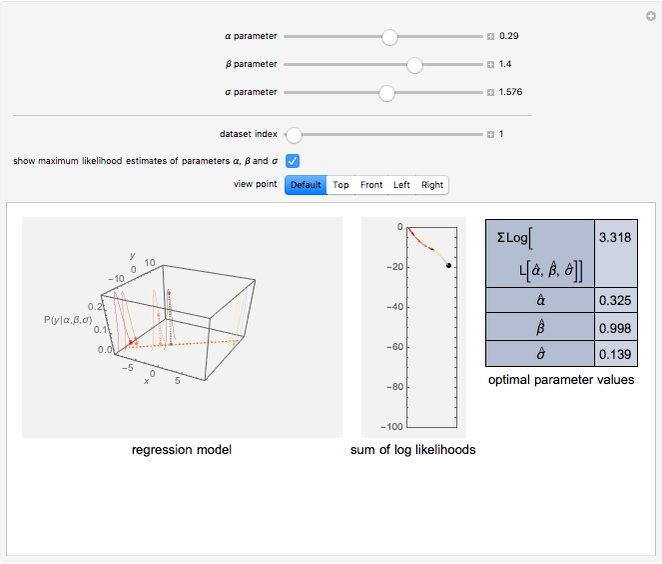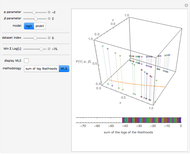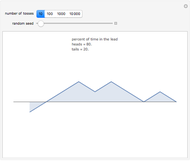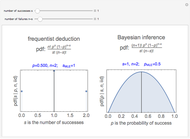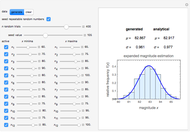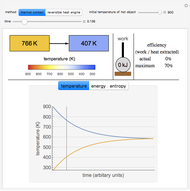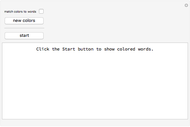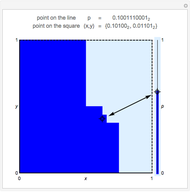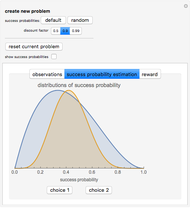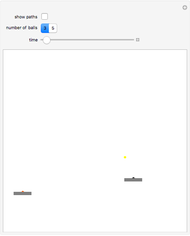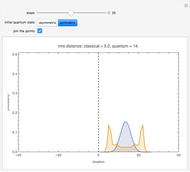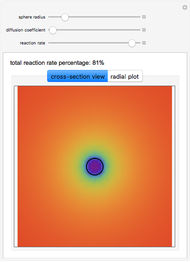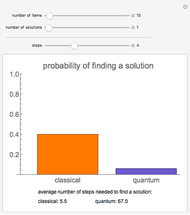Maximum Likelihood Estimation for Coin Tosses

Requires a Wolfram Notebook System
Interact on desktop, mobile and cloud with the free Wolfram Player or other Wolfram Language products.
This Demonstration estimates the probability  that a biased coin will come up heads from a series of flips, using the maximum likelihood method. This method estimates
that a biased coin will come up heads from a series of flips, using the maximum likelihood method. This method estimates  from the peak of the plotted curve, which shows the relative likelihood of
from the peak of the plotted curve, which shows the relative likelihood of  based on the number of heads observed in the series of flips. The shaded interval represents a 95% confidence interval for the probability. 95% of all confidence intervals constructed in this manner would contain the true value of
based on the number of heads observed in the series of flips. The shaded interval represents a 95% confidence interval for the probability. 95% of all confidence intervals constructed in this manner would contain the true value of  .
.
Contributed by: Tad Hogg (July 2008)
Open content licensed under CC BY-NC-SA
Snapshots
Details
Snapshot 1: Observing no heads in two trials has maximum likelihood estimate  , but with a wide confidence interval: for 95% confidence we can only say the probability is less than 0.63.
, but with a wide confidence interval: for 95% confidence we can only say the probability is less than 0.63.
Snapshot 2: Observing 20 heads in 100 trials has maximum likelihood estimate  , the same as observing two heads in 10 trials. But the 95% confidence interval is much smaller: between 0.13 and 0.29.
, the same as observing two heads in 10 trials. But the 95% confidence interval is much smaller: between 0.13 and 0.29.
Snapshot 3: Observing two heads in 10 trials shows a narrow confidence interval that corresponds to a low confidence level: the 50% confidence interval is between 0.16 and 0.33.
Flipping a biased coin  times gives
times gives  heads with probability
heads with probability  , the binomial distribution, where
, the binomial distribution, where  is the probability that a flip gives heads. An unbiased coin has
is the probability that a flip gives heads. An unbiased coin has  .
.
Estimating the probability  is the inverse problem: we observe
is the inverse problem: we observe  heads in
heads in  trials and want to determine the unknown probability
trials and want to determine the unknown probability  and the accuracy of the estimate. The maximum likelihood estimate is the value of
and the accuracy of the estimate. The maximum likelihood estimate is the value of  giving the largest probability for the observed data. Treating the binomial distribution as a function of
giving the largest probability for the observed data. Treating the binomial distribution as a function of  , this procedure maximizes the likelihood, proportional to
, this procedure maximizes the likelihood, proportional to  . Viewed as a distribution on the unknown parameter
. Viewed as a distribution on the unknown parameter  with given values of
with given values of  and
and  , the likelihood is proportional to the beta distribution, with parameters
, the likelihood is proportional to the beta distribution, with parameters  and
and  . The maximum of the likelihood occurs at
. The maximum of the likelihood occurs at  . For the plots, the likelihood is normalized so that its largest value is 1.
. For the plots, the likelihood is normalized so that its largest value is 1.
The confidence interval characterizes the accuracy of the maximum likelihood estimate. For a confidence level  between 0 and 1, the confidence interval gives a range of probabilities that contains the actual value with probability
between 0 and 1, the confidence interval gives a range of probabilities that contains the actual value with probability  . The interval covers a fraction
. The interval covers a fraction  of the area under the likelihood curve shown in the plot.
of the area under the likelihood curve shown in the plot.
The precise choice of confidence interval is somewhat arbitrary. Here the interval excludes equal area tails on each side of the curve's peak (except when  or
or  , in which case the maximum likelihood estimate is 0 or 1, respectively, and the shaded area is a one-sided interval). With this choice for the interval, if the actual probability value
, in which case the maximum likelihood estimate is 0 or 1, respectively, and the shaded area is a one-sided interval). With this choice for the interval, if the actual probability value  is outside the confidence interval,
is outside the confidence interval,  is equally likely to be above or below the displayed interval.
is equally likely to be above or below the displayed interval.
Permanent Citation






